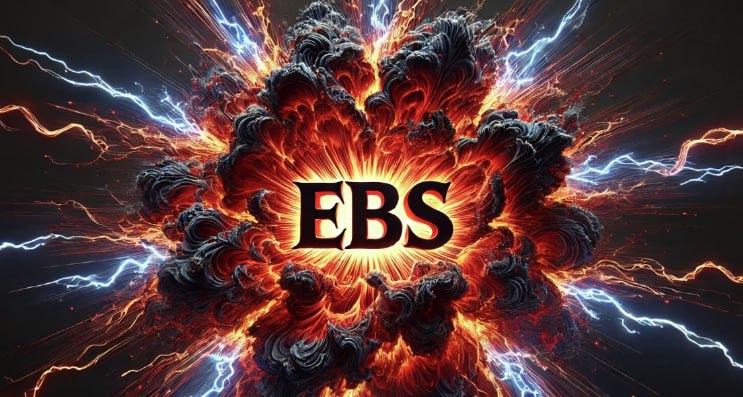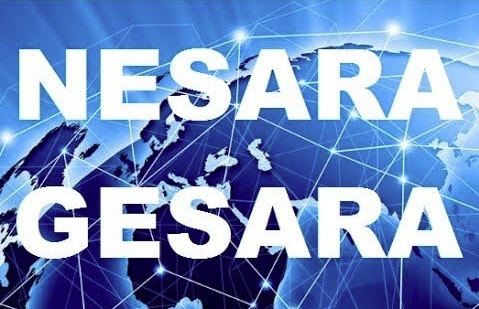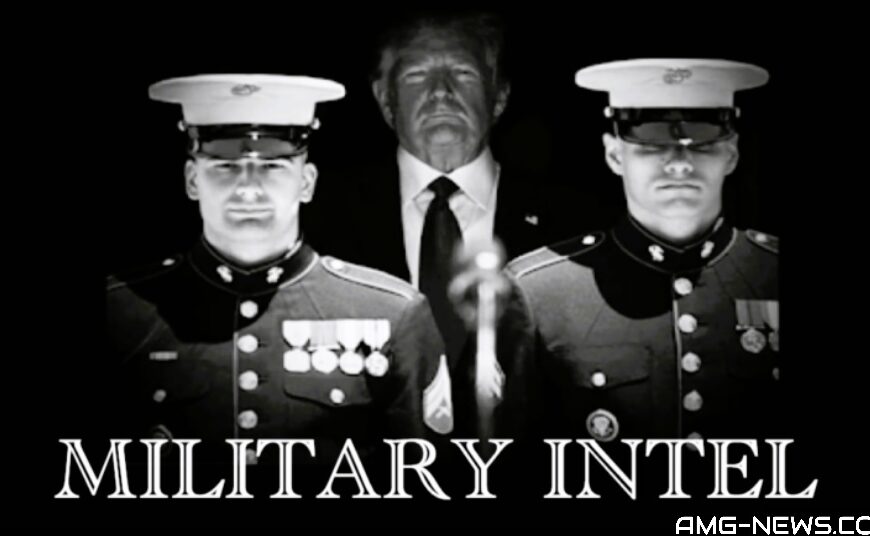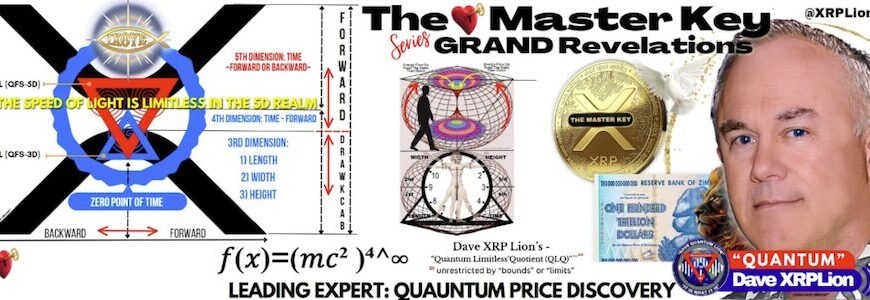By Medeea Greere of AMG-News on January 14, 2025
The New Global Financial System Operating on the Starlink Satellite System: Basel III and ISO20022
A New Dawn in Global Finance: Transformation, Technology, and Triumph.The global financial system stands on the brink of a revolutionary transformation. The forces driving this shift are immense—regulatory overhauls, technological innovations, and an insistent demand for a more secure, efficient, and resilient financial order. At the heart of this upheaval lies the groundbreaking Starlink Satellite System and the aggressive implementation of Basel III and ISO20022. Together, they are reshaping how financial institutions operate, communicate, and secure their futures.
In this article, we will dive deep into each element driving this transformation, explore how they interconnect, and explain why their impact is nothing short of a seismic shift in global finance. But first, let’s discuss the technology that’s making all of this possible – the Starlink Satellite System.
The Starlink Satellite System: Connecting the New Financial World
Revolutionizing Connectivity. Starlink, the ambitious project developed by SpaceX, is not just another satellite network—it’s the nervous system of the new global financial landscape. Launched to provide global internet coverage with low latency and high bandwidth, the Starlink Satellite System has evolved into the foundational layer for secure, reliable, and rapid data transfer across continents.
Imagine a world where data flows seamlessly from New York to Tokyo in milliseconds, where financial institutions can communicate securely without fear of cyber threats, and where transactions occur faster than ever before. That’s the world Starlink is bringing to life. It’s not just about faster internet; it’s about creating a financial network without borders—an interconnected global market where information exchanges happen without interruption or insecurity.
Basel III and ISO20022. The role of Starlink goes beyond simply providing internet access; it acts as the underlying infrastructure enabling the full potential of Basel III and ISO20022. For these regulatory frameworks to be effectively implemented globally, a highly reliable communication system is essential. Starlink provides that backbone, creating a secure network that banks, financial institutions, and regulators can trust. Without Starlink’s global satellite network, the implementation of these new standards would be challenging, if not impossible. This technology is truly the unsung hero behind the scenes of the global financial overhaul.
Basel III: Redefining Financial Stability
The Origin and Purpose of Basel III. Basel III has been a hot topic of discussions in financial circles for years. Emerging in the wake of the 2008 global financial crisis, this regulation was designed to ensure the world never witnesses such catastrophic financial collapse again. Developed by the Basel Committee on Banking Supervision, this international regulatory framework seeks to improve the resilience of banks by enforcing stricter capital requirements, enhancing risk management, and promoting financial stability.
The essence of Basel III lies in creating a banking system better prepared to handle economic stress. When the world economy trembles, the last thing anyone wants is to see major banks collapse like dominos, dragging economies, and ordinary citizens, down with them. Basel III steps in as a safeguard—a protective layer that prevents financial institutions from becoming the weak links in the global economic chain.
Strengthened Capital Requirements: The Financial Fortress. One of the cornerstones of Basel III is the requirement for higher capital reserves. But why is this so crucial? In simple terms, the more capital a bank holds, the better equipped it is to absorb financial shocks. Think of it as a buffer—a cushion that allows banks to weather financial downturns without resorting to government bailouts or bankruptcy.
Under Basel III, banks are required to hold a larger proportion of their assets as high-quality capital. This ensures that even in the face of unforeseen economic turbulence, they have the means to stay afloat. It’s a massive change for the industry, forcing banks to rethink their strategies, increase transparency, and bolster their financial health.
By mandating these higher reserves, Basel III aims to protect taxpayers from having to bail out failing banks. The aggressive nature of this requirement is clear—there is no room for negotiation, no flexibility. Compliance is a must, and failure to comply with Basel III means losing the license to operate as a bank. This acts as a powerful motivator for financial institutions to build and maintain their financial fortresses.
Liquidity Requirements: A Watchful Eye on Short-Term Obligations
Capital isn’t the only focus of Basel III; liquidity plays a critical role as well. Banks need to be ready to meet their short-term obligations, and stringent liquidity requirements are in place to ensure just that. Basel III mandates that banks maintain a stockpile of high-quality liquid assets, which can be easily converted to cash during times of financial stress.
Why is this crucial? Because liquidity issues are the silent killers of financial stability. The 2008 financial crisis was characterized by a liquidity crunch, where institutions found themselves unable to access the cash they needed to stay solvent. Basel III aims to prevent such situations by ensuring banks always have enough liquid assets on hand to meet short-term liabilities, preventing the domino effect of financial failure.
The liquidity requirements enforce vigilance, compelling banks to have a proactive approach to cash flow management. It’s not just about holding assets; it’s about holding the right kind of assets—those that can be quickly liquidated without significant loss of value.
ISO20022: The Language of Modern Finance
Redefining Financial Communication. While Basel III focuses on fortifying financial institutions themselves, ISO20022 is all about the way they communicate. It is a global standard for financial messaging, ensuring that all financial entities speak the same language during transactions. Think of it as a universal translator for finance—a way to ensure that whether you’re in New York, London, or Shanghai, you can communicate clearly and effectively with your financial counterparts.
ISO20022 represents a dramatic shift in how financial information is exchanged. Gone are the days of fragmented communication and incompatible data formats. This new standard offers a unified messaging protocol that streamlines data exchange, reduces errors, and enables faster, more secure transactions.
Standardization: A Game-Changer for Efficiency. The brilliance of ISO20022 lies in its ability to standardize data formats across various financial platforms. No longer will banks struggle to translate data formats from one system to another, nor will they be held back by miscommunication and data errors. By offering a consistent data format, ISO20022 improves the clarity and speed of financial transactions, reducing both time and cost involved in processing them.
This standardization means that financial institutions, payment service providers, and fintech startups all speak the same language. It is a transformation that brings with it the potential for unparalleled efficiency—faster cross-border payments, reduced processing times, and lower costs.
Moreover, ISO20022 allows for rich data to accompany each financial message, which enhances compliance, reduces fraud, and improves customer experiences. Imagine a world where financial transactions are smooth, seamless, and error-free—that’s the promise of ISO20022.
The Aggressive Transformation: Basel III and ISO20022
A Coordinated Overhaul of the Financial System. Together, Basel III and ISO20022 represent an aggressive push toward transforming the global financial system. Basel III seeks to build a more resilient banking sector, while ISO20022 focuses on creating a unified language for global financial transactions. These changes are not merely suggestions or optional guidelines—they are demands, ultimatums for the financial industry to evolve and improve.
Banks and financial institutions are being forced to change how they operate at their core. For some, this means a complete overhaul of their current practices; for others, it requires embracing new technologies and methodologies to stay compliant and competitive in a rapidly changing landscape.
Basel III: Constructing the Financial Fortress
Enforcing Financial Strength and Stability. Basel III is designed to be a financial fortress, able to withstand the harshest economic storms. By enforcing higher capital requirements, it ensures that banks have the means to protect themselves and their clients during financial downturns. This is not just a safeguard—it’s a guarantee of financial stability.
The aggressive nature of Basel III is evident in its uncompromising stance on compliance. Banks have no choice but to adapt and fortify themselves. For financial institutions that have traditionally thrived on leveraging assets to maximize profits, Basel III represents a new reality—one where risk-taking is balanced with responsibility, and where stability is prioritized over short-term gains.
Banks that fail to comply with Basel III will face dire consequences. Non-compliance equates to losing the right to operate as a bank, a penalty that could result in financial ruin. This is why Basel III is seen as an aggressive force in the industry—it’s not simply asking banks to change; it’s demanding it.
ISO20022: Disrupting the Financial Communication Paradigm
A Swift and Secure Transformation. The aggressive nature of ISO20022 lies in its potential to disrupt the traditional financial communication paradigm. It demands that financial institutions adopt a more efficient, secure, and standardized way of conducting business. This means overhauling outdated systems, retraining staff, and embracing the future of financial communication.
The benefits are clear—faster transactions, reduced errors, and improved security. However, the path to implementation is not without its challenges. Banks that fail to adopt ISO20022 will find themselves at a significant disadvantage, struggling to keep up with the pace of change and losing ground to fintech disruptors quick to embrace this new standard.
The urgency to adopt ISO20022 is heightened by its widespread global acceptance. Financial markets around the world are moving toward this standard, and institutions that don’t keep up risk being left behind. For banks, payment service providers, and fintech companies, the choice is simple—evolve or risk obsolescence.
The Convergence of Technology, Regulation, and Innovation
The Role of Starlink in Enabling Basel III and ISO20022. The aggressive transformation of the global financial system hinges on one key element—connectivity. Without a reliable and secure communication network, the implementation of Basel III and ISO20022 would face significant challenges. This is where the Starlink Satellite System emerges as the unsung hero of the financial world.
By providing a global network that ensures seamless and secure data exchange, Starlink enables the efficient implementation of ISO20022 and supports the communication requirements set by Basel III. It’s a technological backbone that underpins the financial world’s aggressive transformation, ensuring that no bank, payment service provider, or regulator is left disconnected.
Starlink’s secure, low-latency network allows financial institutions to communicate with speed and confidence. In an industry where seconds can mean millions, this technology is more than just a convenience—it’s a critical component of the new financial order.
A New Financial World Order: The Dawn of a Secure and Unified System
Basel III and ISO20022: Shaping the Future. The aggressive transformation brought about by Basel III and ISO20022 is reshaping the global financial system in ways that will be felt for decades. By enforcing stability and standardization, they are creating a financial world that is more robust, resilient, and efficient.
This new financial order is not without its challenges—the road to compliance is steep, and the costs of transformation are high. But the benefits are undeniable. A secure, stable, and unified global financial system is within reach, and it’s being built on the foundations of Basel III, ISO20022, and the Starlink Satellite System.
In a world where financial crises can ripple across continents and where data breaches can lead to catastrophic losses, the need for a stronger, more efficient, and secure financial system is clear. Basel III, ISO20022, and Starlink are not just buzzwords—they are the pillars of a new financial future, a future where the risks of the past are left behind, and the promise of a more resilient financial world is realized.













